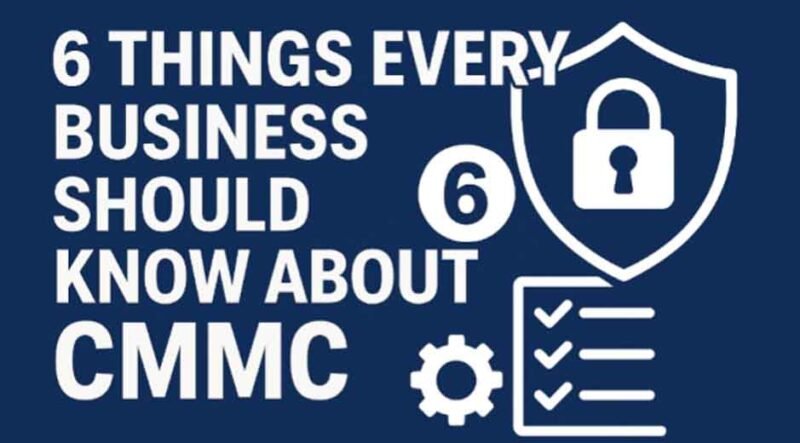What does it mean to put sensitive defense data in the way of ever more advanced cyberattacks?
Across the industry, with federal contracts, the stakes go well beyond technology; they impact business operations, supply chain integrity, and national security.
To address the issue, the United States Department of Defense has launched the Cybersecurity Maturity Model Certification (CMMC), a system designed to ensure that contractors protect sensitive information with precision and accountability.
CMMC is not a compliance program, but rather a determining factor for companies that are still permitted to bid on contracts containing Federal Contract Information (FCI) and Controlled Unclassified Information (CUI).
For the companies in this industry, certification establishes the minimal acceptable levels of cybersecurity preparedness and strength.
Those companies that are unable to meet these requirements may be shut out of lucrative defense contracts, damage their reputations, and face greater exposure to breaches.
The next six observations describe why CMMC is important and how it redefines business responsibilities.
The Structure of CMMC 2.0 and Role of Assessments

CMMC was re-reduced to three tiers in the CMMC 2.0 approach. Level 1 (Foundational) is sufficient for cybersecurity hygiene, adequate for processing FCI, but Level 2 (Advanced) addresses organizations that handle CUI and requires more rigorous controls based on NIST SP 800-171.
Level 3 (Expert) supplements even higher-level requirements, some from NIST SP 800-172A, for preventing advanced persistent threats.
One of the major updates is the call for the use of third-party evaluation in some situations. Sensitive CUI or higher-risk contracts tend to require a company to be evaluated by a Certified Third-Party Assessment Organization (C3PAO).
Self-certification is not sufficient; certification under CMMC C3PAO may be required. For Level 2 contracts, the solicitation will indicate whether the assessment can be self-assessed or if it must be conducted through a C3PAO.
It is therefore important to understand clearly which level and what type of assessment your organization is most likely to face in a plan, resources, schedule, and controls.
When and How CMMC Becomes Contractually Required
CMMC compliance is also included in Department of Defense contracts. Under the final rule, all DoD solicitations involving the processing of FCI or CUI will specify the required CMMC level for the effort involved in the work, ensuring the contract can be issued.
Subcontractors need to comply as well when their work includes FCI or CUI. Each contractor management system that handles, stores, or transmits FCI or CUI will be assigned a UID. The UID is associated with the respective CMMC status of the system.
A senior official (normally referred to as the “affirming official”) will provide annual statements of continued compliance for each UID. This creates compliance as an ever-changing, continuous process rather than an infrequent box to check.
Businesses need not only to be concerned with achieving the required level, but also with maintaining current status and anticipating future needs as contracts expire, systems change, or new threats arise.
The Importance of Scoping and Controlled Unclassified Information (CUI)

Often, the most critical and commonly misinterpreted determinations involve establishing the proper scope of systems, data, or processes that fall under CMMC requirements.
Companies must identify all assets that process, store, or transmit FCI or CUI on their contracts. That encompasses networks, endpoints, subcontractor relationships, cloud environments, and physical locations.
CUI is data developed or owned by the U.S. government or data processed by government contractors, and must be protected by policy, regulation, or law. Misclassification of CUI will result in assessment failure or non-compliance.
Effective scoping reduces unnecessary costs, maximizes waste elimination, and prevents surprises during assessment. Good scoping also assists in delineating the scope of what should be protected so that controls and resources can be utilized more effectively.
Costs, Resources, and Planning
Adherence to CMMC takes time and money. Bigger organizations or those with a more complex environment will incur higher costs. For Level 2 certification as a C3PAO, companies can expect to pay significantly more than for self-evaluation.
Organizations should plan for costs related to:
- Gap assessments and readiness audits
- Implementation of technical controls (encryption, network segmentation, secure configurations)
- Policy, procedure documentation and staff training
- Hiring or contracting with C3PAOs or consultant firms if external help is required
Because there are often delays or limited availability in assessment scheduling (especially for C3PAOs), businesses should build buffer time into their compliance roadmap. Early gap analysis followed by a defined plan of action and milestones (POA&M) is strongly advised.
Impacts on Supply Chain and Subcontractors

Prime contractors are required to ensure that their subcontractors are CMMC compliant, particularly if their subcontractors will be handling FCI or CUI.
The compliance requirement flows down the supply chain; failing to ensure the compliance of a subcontractor can put the prime contractor’s eligibility and contract performance at risk.
This implies that companies functioning as subcontractors will have to stay aware of their contracting partners’ CMMC requirements and, in certain instances, provide evidence such as test results, certificates, or standing within the Supplier Performance Risk System (SPRS).
Subcontractors’ transparency is now necessary; primes must ensure that subcontractors hold valid CMMC status before sharing sensitive information.
So, primes and subcontractors should get on the same page sooner rather than later – aligned on roles & responsibilities, scope and control expectations clarified, and supply chain controls in place and consistent.
Maintaining Continuous Compliance and Monitoring
Achieving the required CMMC level is just the starting line; maintaining it is a continuous process. Yearly affirmations, periodic reassessments, patching, updates, monitoring, and incident response are not one-off tasks but ongoing obligations.
Businesses should establish internal audit programs, incident response plans, and security monitoring tools. They should also allocate resources for ongoing staff training, as evolving threats, changes in business operations, or updates in compliance requirements can introduce new gaps.
Any material changes in systems or data handling should trigger a review of CMMC status. A well-structured governance model with clear ownership of cybersecurity, periodic review cycles, and up-to-date documentation (such as System Security Plans, Policies, and POA&Ms) will help firms stay ready.
This reduces the risk of surprises or assessment failures, thereby enhancing the overall risk mitigation posture.
Conclusion
CMMC isn’t just another compliance hurdle; it’s a business imperative that directly affects your competitiveness, credibility, and security posture.
By understanding its structure, requirements, and impact on both prime and subcontractor relationships, you put your organization in a stronger position to win and retain defense contracts.
Planning, scoping effectively, and committing to continuous monitoring ensure you won’t be caught off guard by audits or evolving threats. Think of CMMC as more than a mandate; it’s a roadmap to resilience and long-term success.
Stay proactive, stay compliant, and stay ready to protect what matters most, your business and national security!









